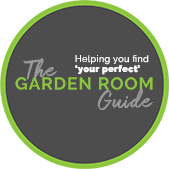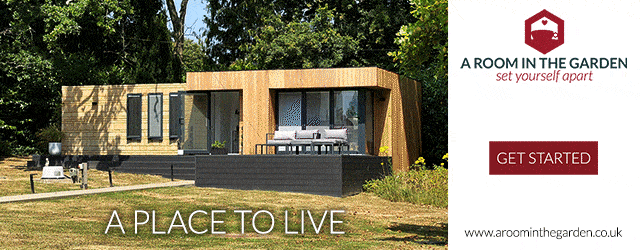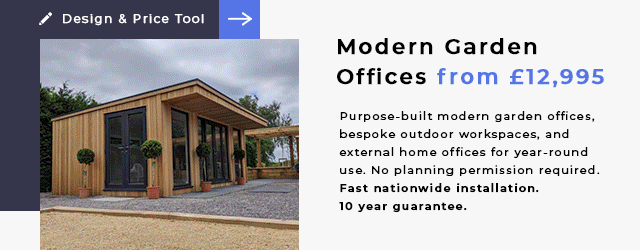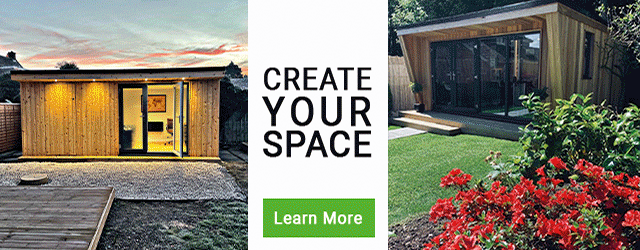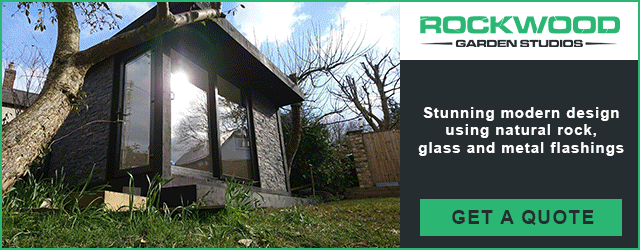Tips to maximise your budget when buying a garden room
There is no doubt that a garden room is a big ticket purchase. Having worked within the garden room industry for more than 20 years, we have picked up a few tips as to how you can maximise a budget and still end up with a wonderful new room.
You'd be better compromising on size than specification
We often speak with buyers who are comparing a multi-layer garden room building with a log cabin building. They tell us they are drawn to the log cabin because they will get so much more space for far less money.
While it can be tempting to opt for space over specification, there are elements of the specification that you shouldn't compromise on. For instance, you want to ensure that you have insulation in the floor, wall and roof, double glazing and the specialist breather membrane, which protects against moisture ingress. While there are ranges that are an exception, log cabin buildings in general, even insulated ones, don't incorporate all these elements.
For these reasons, you would be better served to choose a slightly smaller multi-layer garden room specification rather than a bigger footprint log cabin specification.
Consider a pre-designed garden room
Exploring your garden room options, you may find that the price spirals upwards as you make different design choices.
Several modular and bespoke designers are adding pre-designed garden room options to their portfolios. These buildings are a good choice as you get a well-specified building at a competitive price and with a short lead time.
Typically, you are limited to set sizes and door and window configurations with pre-designed garden rooms, but they can be an excellent buy.
Your exterior cladding choice will have a significant impact on the cost
The exterior cladding is one of the most significant costs in a garden room's build-up. Most garden room companies offer a range of durable finishes you can choose from.
To maximise their clients' budgets, several companies offer the option of mixing two cladding finishes together. They suggest utilising the more expensive finishes on the most prominent walls and a cheaper finish on the other walls.
A growing trend is to mix Western Red Cedar with cement particle boards. Both finishes offer a long maintenance-free lifespan and create a stylish contemporary aesthetic.
While Western Red Cedar is beloved because of its rich natural colouring and natural durability, Siberian Larch, Thermowood, and British Cedar offer similar low-maintenance lifespans.
The interior finish is another area you can make some savings
While desirable, a plastered and decorated finish is the most expensive choice for the interior of a garden room. This is because it is labour-intensive and requires the installation team to be on-site for a longer period than other finishes require.
White melamine wallboards are a popular alternative. They create a naturally light room and are easy to wipe clean. They are a good choice if you are looking to reduce the overall cost of the building.
More and more, we are reading specifications that have a plywood or MDF interior finish. Some people choose to leave these finishes bare for a pared-down industrial look, but they can easily be painted.
While this leaves a job for you to complete before you can move your things in, it can save you quite a bit of money.
Door & window configurations that won't blow the budget
You will find that French doors - a pair of doors that open outwards into the garden, are often the standard option on garden room buildings. This is because they are the most cost-effective option.
Smaller sets of sliding doors are similarly priced to French doors. But, once you start moving into wide sets of sliding doors, they can quickly become an expensive choice.
Bi-fold doors, where the doors slide to one side, opening up the whole wall, are a desirable choice but the most expensive you can make. If you want to cut costs, consider French doors. You will achieve a similar wide opening into the garden with both doors open.
Large expanses of glazing are a popular feature in garden room design. Bi-fold doors are often used to achieve this look. As we have mentioned, bi-folds are the most expensive design choice you can make.
You could create a similar look by mixing French doors or sliding doors with fixed glass windows on either side. This is a much cheaper way to achieve a wall of glazing.
Your choice of door & window frame material will significantly affect the cost of your garden room. Powder-coated aluminium framed doors and windows are a stylish option, but if you want to keep to your budget, you might be better served to choose uPVC frames. uPVC frames come in the same on-trend shades of grey as the aluminium options and are no less durable. The uPVC doors and windows used by the industry are house quality and come with the same multipoint locking systems as their aluminium counterparts.
A proper garden room is going to cost you more than £8,000
A garden room that is going to be comfortable to use all year round, and designed to stand the test of time with little maintenance, will, we have found, cost you £8,000 upwards.
We know that there are buildings marketed as garden rooms that cost less than this. Shed and summerhouse companies have added ranges of cheap buildings from Eastern Europe to their range. These buildings only have a very thin layer of not well-performing insulation, and the timbers used for the construction are not as durable as those used in more expensive options that are manufactured in the UK.
We get it; every penny counts at the moment, and these prices are very appealing. But, they will cost you a lot more in the long run in maintenance costs, overall longevity, comfort and running costs. They also don't add the same value to your house when you come to sell as a quality garden room will.
Self building could save you quite a lot
The labour component is a big part of a garden room's price tag. If you are a competent DIY'er and have the time, you could go down the self-build route and save yourself some money.
A few companies offer self-build kits alongside their full installation service. Most tend to be standard designs, but a few companies will design a bespoke kit for you. Our sister site, the Self Build Garden Room Guide, has a guide to your garden room kit options.
Companies like Warwick Buildings and Garden2Office offer shell options allowing you to get weathertight quickly and then choose your own options for the interior.
You undoubtedly will save money buying a garden room kit, but the company is still making a significant markup on the raw material costs.
You stand to save more money if you design your own building and source the materials yourself. Our sister site, the Self Build Garden Room Guide, offers some sample plans which walk you through the different steps of the build and explain the different layers that go into the build-up.
